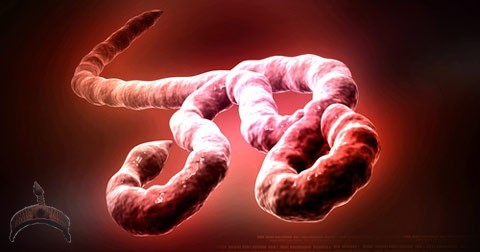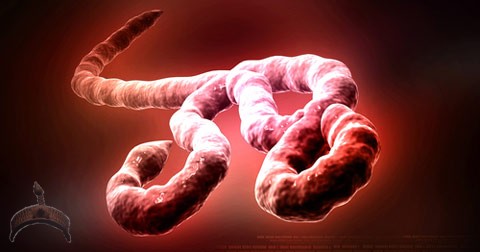Sunday Alamba / APPrimary school children wash their hands after having their temperatures tested for signs of Ebola in Lagos, Nigeria
The scale of the ongoing outbreak of Ebola virus in western Africa has taken healthcare workers, scientists, policy makers, in fact everyone, by surprise. Prior to this
Sunday Alamba / APPrimary school children wash their hands after having their temperatures tested for signs of Ebola in Lagos, Nigeria
The scale of the ongoing outbreak of Ebola virus in western Africa has brought healthcare workers, scientists, policy makers, in reality everyone, by surprise. Prior to the outbreak the biggest quantity of human cases in an outbreak was just over 400. In this outbreak it’s now significantly more than 7,000.
The identification of Thomas Duncan, the first person diagnosed in the US, who later died, and Teresa Romero Ramos, the Spanish nurse who became the first human-to-human transmission of the virus outside Africa, has raised questions about if the virus may be found in countries outside Africa.
Ebola virus is just a disease of contact, it’s transferred from person-to-person by the exchange of bodily fluids (blood, faeces and vomit) from someone who’s showing symptoms. And it is probable you will have further cases of Ebola virus imported via infected individuals travelling back from west Africa. A current study suggested there is a 25-70% possibility of the virus reaching France by the conclusion of October and between 15-25% for the UK in the same timeframe. Other research in September stated that there is a just 10% possibility of an instance being identified in the US that month. The next day Duncan presented to his local hospital.
The global network of flights certainly ensure it is much more likely that further cases is likely to be imported to countries additional to those already affected. However, given the heightened awareness, and enough time these countries experienced to get ready with this scenario – and stronger public health infrastructures – they’re more probably be in the position to limit the transmission of the virus.
Act fast, and act local There’s been plenty of discussion about why this outbreak is indeed much bigger than previously. A few of the reasons suggested are: that there’s only been one previously documented case of human infection with Ebola virus in West Africa (the virus has primarily caused human infections in central and eastern Africa) so healthcare workers in this region had little previous experience in coping with Ebola virus outbreaks; there is a late response by the area and international public health agencies; and ;poor existing healthcare infrastructure because of civil war or not enough investment; and the list can go on.
All outbreaks just before this 1 in West Africa have now been controlled through the implementation and strict maintenance of basic public health strategies – early diagnosis and isolation of infected individuals, provision of appropriate protective equipment for medical staff, contact tracing and education and awareness campaigns targeting the area population. But in case of the present outbreak, the virus could spread in the highly dense and mobile population before these interventions could be place in place.
Breaking transmission If you’re able to break the transmission you are able to control the outbreak. These measures have proved successful. An infected Liberian man who travelled to Nigeria imported the virus, which spread to an additional 19 individuals within the nation but was quickly contained as a result of implementation of the strategies above. Partly this is possibly because of a current healthcare surveillance infrastructure put in place in Nigeria that’s used to monitor for cases of polio. These facilities and personnel were successfully mobilised to limit the spread of Ebola virus. Nigeria hasn’t seen any new cases since August 31 and is now declared “Ebola free” as no more cases are detected.
Given the scale with this outbreak, it is probable that further measures is likely to be needed, such as for instance the usage of experimental treatments and the fast-tracked development of vaccines and therapeutic drugs, as senior experts concluded at a meeting convened by the World Health Organisation in Geneva from the beginning of September. It’s anticipated there is could be a limited roll out of vaccine and drugs to healthcare workers in the region by the start of 2015.
Going airborne? One other issue that’s been at the forefront of peoples’minds is if the virus could mutate to become airborne. The honest answer is that is highly unlikely; but we cannot rule it out.
A recently available report in the scientific journal Science identified that there has been changes to the virus’genetic code in this outbreak but that is and then be likely as a result of nature in which the virus replicates. There’s no evidence why these mutations have resulted in the virus becoming airborne. When we try to find types of better studied viruses that mutate, such as for instance influenza and human immunodeficiency virus, we’ve known about these viruses for quite a while and monitored the accumulation of mutations inside their genomes.
As the rate of mutations has been prolific these viruses haven’t changed the mechanism through which they’re transmitted. Actually, there’s no evidence any virus has changed its mode of transmission because of naturally occurring mutations within their genomes.
 Ọmọ Oòduà Naija Gist | News From Nigeria | Entertainment gist Nigeria|Networking|News.. Visit for Nigeria breaking news , Nigerian Movies , Naija music , Jobs In Nigeria , Naija News , Nollywood, Gist and more
Ọmọ Oòduà Naija Gist | News From Nigeria | Entertainment gist Nigeria|Networking|News.. Visit for Nigeria breaking news , Nigerian Movies , Naija music , Jobs In Nigeria , Naija News , Nollywood, Gist and more










